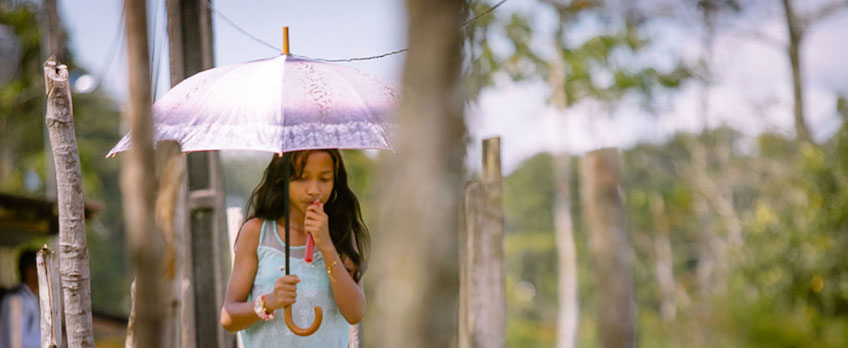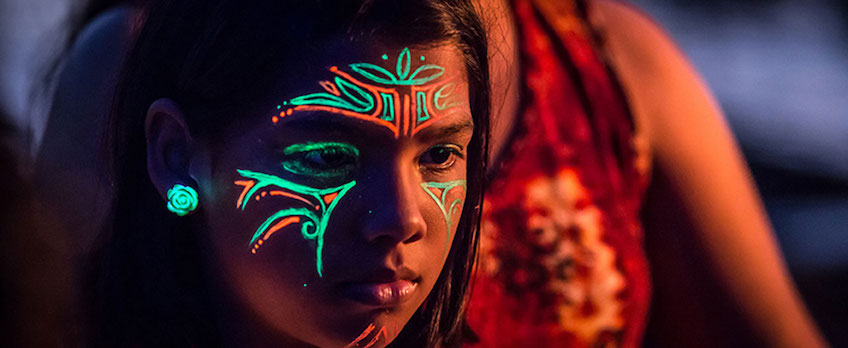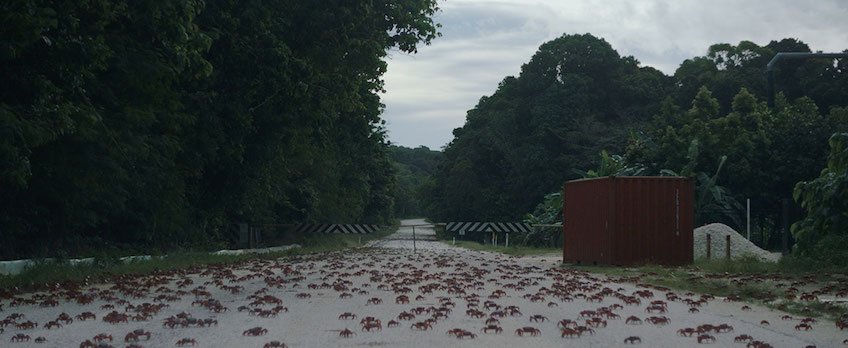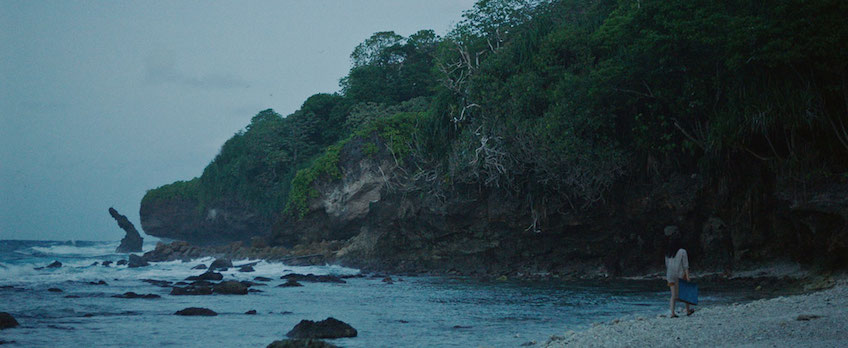Interested in writing for our blog? Send your pitches to editor@miff.com.au.
Other Worlds: Spirituality and the Refugee Experience

By Valerie Ng
In The Island of the Hungry Ghosts, Australian filmmaker Gabrielle Brady observes the annual ritual of sacrifice on Christmas Island, in which residents burn bits of paper-mâché to appease the spirits. This is the Hungry Ghost Festival, where Buddhists feed the visiting apparitions of the lower realm, on the fifteenth day of every seventh month. As we watch the bonfire, a voice laments “those stuck between worlds, trapped between homes.” It asks: “What offering will it take to free those spirits from uncertainty?” At that point, the ashes of sacrificial immolation rise and fill the air, and dissolve into the night.
The spectral displacement of ghosts, blurred and drifting, echoes throughout Hungry Ghosts and Beatriz Seigner’s feature Los Silencios, which both screened this year at Melbourne International Film Festival. Brady’s film swims in metaphor, with the stories of Christmas Island refugees refracted through tales of migrating red crabs, and the sacrificial rituals that feed the hungry ghosts. Siegner’s film centres around a family of refugees fleeing the Colombian Civil War, who settle on an island occupied by lost souls. While the ghosts of Christmas Island are only tangible through word-of-mouth, in Los Silencios, they are materially inseparable from human beings. Despite this, these spirits share an incongruousness with their environment – they are intrinsically unassimilated and alien.

Los Silencios
The inevitable comparison between ghost and refugee in both films trespass into abstractions – Christmas Island’s refugees are caught in a soft, indefinite limbo, occupying a corporeal space that we see only once, and from afar: a compound of detention centres, whose stocky, grey, impersonal character stands in drastic contrast to the lush greenery that surrounds them. In Los Silencios, this sense of displacement is not conveyed spatially – the sense of place, palpable and indelible, forms the tonal backbone of the film. The island itself – a speck in between Brazil, Columbia and Peru – is half drowned: the families live in a network of damp stilt houses, they row to town meetings and sell fish for a living. Sofia Oggioni’s wide, still compositions, often muddy and grey-skied, reinforce the importance of place over people.
Towards the end of the film, however, when Seigner documents the stories of real survivors of the war, the camera stays very still, and very close to their faces. Their clothes and jewellery glow fluorescent under an entrancing black light. In capturing these intimate stories, Seigner let her camera roll for five to seven hours. In cutting it, editors Katharina Fiedler and Lara Rodríguez Vilardebó positions this deeply personal sequence as a reflection on the irrevocability of war, and the desire for reconciliation – between both sides of the conflict, and between the living and the dead.
Brady too becomes charged with the purpose of documenting real stories. Throughout Hungry Ghosts, we hear the moving stories of asylum seekers in the brief moments they are allowed out of the detention centre. But their escape is only an emotional one: they sit in a white, clinical room, in conversation with real-life torture and trauma counsellor, Poh Lin Lee. The handheld camera disposes of any objectivity by peering in with an intimate extreme close up; we are shoved into the eyelids and cheeks and lips of each person as they recount their own tragic experiences. This physical restriction traps and presses a powerfully sentimental reading into the other facets of the film, ripping through the opacity of metaphor.

The Island of the Hungry Ghosts
The immediate and overriding emotional provocation triggered by these sequences, which invoke the current violence of Australia’s detention centre policy, feels continually like a call for action. Though the Australian Border Force Act, which was in force during the film’s shoot, has since been repealed, Australia’s detention regimes are as inhumane as ever. In a post-film Q&A, Brady suggested that the ambiguities of the film allows viewers to form different layered subjective perspectives – but the frictions of Hungry Ghosts travel loud and clear: the film is intrinsically and inevitably political. Her intention to make a statement of art, not politics, is in keeping with the creation of a piece that asserts its value in ambiguity over didacticism. Expression and principle, though, are clumsy in conciliation. The fictional segments seem designed to muddle any strict reading, as in a scene where Poh Lin contemplates the emotional weight of her job, or when a Chinese couple hack their way through the jungle to find a line of stone graves, or even the opening scene, in which the camera slices its way through shots of a dark, startling figure running high-speed through the forest, a moment as jarring as it is haunting. Though the pace of the film at times slumbers, its sense of urgency is necessitated entirely through the topicality of its subject-matter – the enactment of the Australian Border Force Act, the discovery of a dead asylum seeker on the beach, the way Poh Lin’s refugee patients mentally deteriorate and then disappear, without any explanation, from her roster.

The Island of the Hungry Ghosts
Los Silencios, on the other hand, indulges deeply in the leisure of fiction, and remains mostly apolitical, documenting people displaced from both sides of the Columbian Civil War. Though it exhibits a demand for peace, the film acknowledges that this may not ever be capable of being resolved. Los Silencios forms a less urgent and more meditative experience than Hungry Ghosts, through its ability to reframe the refugee experience in a fictional light. Disposing of handheld movement, the film’s cinematography is carefully composed and consists largely of staged, stoic frames, casting a portrait of mundanity and desolation; each shot heaves under the heavy breath of the ambient sounds of wildlife – the cry of birds, insects, wind. Though Seigner also chooses to incorporate the stories of real people, their stories are treated with distance and respect – mourning past rather than present tragedy. In the final act, under the drawl of lyrical chanting, the film’s ghosts are revealed. The patterns of fluorescence plastered on certain faces, apparent only in this black light, is what separates them from the real people. The force of this realisation bleeds backwards into the film; it solidifies a previously abstracted grief, or alienation – it anchors the unmoored.
The Island of the Hungry Ghosts is playing on 7 August at 6.30pm and Los Silencios can be seen on 10 August at the Forum Theatre.